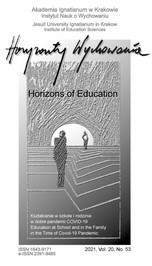What is the Impact of Multimodality and Intersubjectivity on the English Humour?
What is the Impact of Multimodality and Intersubjectivity on the English Humour?
Author(s): Joanna Jabłońska-HoodSubject(s): Cognitive Psychology, Methodology and research technology, Film / Cinema / Cinematography
Published by: Uniwersytet Ignatianum w Krakowie
Keywords: blending; conceptual integration theory; English humour; intersubjectivity; multimodality;
Summary/Abstract: RESEARCH OBJECTIVE: The purpose of my article is to demonstrate how the terms of multimodality and intersubjectivity function within the areana of English humour, specifically in reference to a chosen sitcom. To this means I shall employ the cognitive apparatus of conceptual integration theory, aka blending. THE RESEARCH PROBLEM AND METHODS: The presented research problem centres around the notions of intersubjectivity, i.e. the human ability to display a shared perception of reality with regard to members of their own community, as well as multimodality, i.e. the use of more than one sense for the purpose of meaning rendition. Both phenomena are studied here with regard to the English humour, whose explanation is based on a cognitive linguistic method of blending. THE PROCESS OF ARGUMENTATION: Having explained the term ‘English humour’, I then clarify intersubjectivity, multimodality and cognitive integration, which will serve here as the tools for the purpose of my humour analysis. Therein I intend to show how they interlink and how their roles influence the comprehension of English humour. RESEARCH RESULTS: The result of this argumentation is constituted by the fact that intersubjectivity and multimodality together with blending can greatly enhance the comprehension of the amusing contents within English comedy. CONCLUSIONS, INNOVATIONS, AND RECOMMENDATIONS: The analysis confirms that conceptual integration theory, as enriched by intersubjectivity and multimodality, provides a humour researcher with a concrete apparatus for measuring humour effects. However, further research is advocated into the process of blending, as accompanied by intersubjectivity and multimodality, with recourse to English humour as well as other types of humour, e.g. the Polish comedy, in order to provide contrastive evidence for these tools and their usefulness or effectiveness.
Journal: Horyzonty Wychowania
- Issue Year: 19/2020
- Issue No: 52
- Page Range: 83-92
- Page Count: 10
- Language: English

